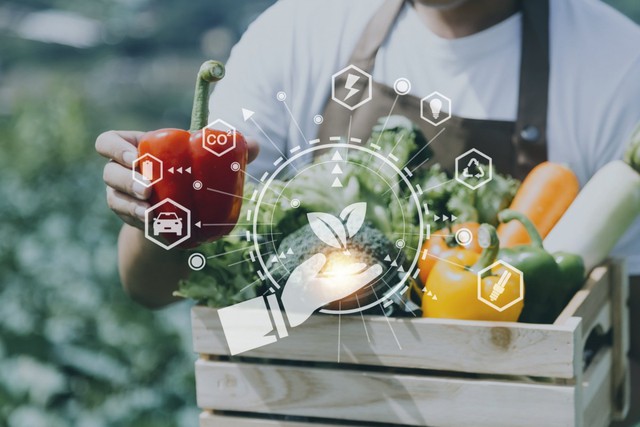Viet Nam emerges as a major global food supplier
VGP - Viet Nam has emerged as one of the world’s key suppliers of food and agricultural products, said Pham Van Duy, Deputy Director General of the Department of Quality, Processing and Market Development under the Ministry of Agriculture and Environment.

Viet Nam's agricultural products have been exported to 190 countries and territories
At a press conference held on November 5, the Ministry of Agriculture and Environment announced major events marking the 80th anniversary of the agricultural and environmental sector (1945–2025) and the first Patriotic Emulation Congress, underscoring the country's achievements in agricultural development and international integration.
Expanding reach on the global agricultural map
According to Pham Van Duy, Vietnamese agricultural products have reached almost every corner of the world. "There are 195 countries and territories globally, and our agricultural goods are already present in over 190 of them," he said. "This clearly reflects Viet Nam's strong production, processing, and integration capabilities."
Viet Nam now ranks among the world's leading exporters across multiple commodities. In 2024, the country exported 9 million tons of rice, ranking third globally, after India and Thailand. With an annual rice output of more than 39 million tons, Viet Nam not only ensures domestic food security but also makes a significant contribution to global food supply stability.
The seafood sector also remains a bright spot, maintaining an export value of around US$10 billion, making Viet Nam among the top three seafood exporters worldwide, after China and Norway. This achievement demonstrates the industry's resilience and recovery following the COVID-19 pandemic, when exports peaked at US$11 billion in 2022.
In addition, Viet Nam continues to be the world's second-largest coffee exporter, after Brazil, with an annual output of 1.6–1.8 million tons and export turnover exceeding US$4.5 billion. The fruit and vegetable industry has also shown remarkable growth, placing Viet Nam among the top 15 global exporters, thanks to favorable climate conditions, expanding processing capacity, and the dynamism of young enterprises.
Other key exports such as cashew nuts, pepper, rubber, and wood products have further strengthened Viet Nam's global agricultural footprint. "Given these figures, the statement that Viet Nam 'feeds the world' is not an exaggeration," Pham affirmed. "Our agriculture truly plays a crucial role in supplying food to hundreds of nations."
Bright export outlook and growth potential
Deputy Minister of Agriculture and Environment Phung Duc Tien reported that agro-forestry-fishery exports in the first ten months of 2025 reached over US$58 billion, an increase of 13–14 percent year-on-year, with a trade surplus of around US$17 billion. Major export groups—including rice, coffee, seafood, fruits, vegetables, and wood—have all recorded robust growth.
With current momentum and effective utilization of free trade agreements (FTAs), Viet Nam is on track to achieve its export goal of US$65–67 billion by the end of this year.
Phung emphasized that Viet Nam's agricultural sector still has tremendous room for growth, especially as science, technology, logistics, and digital transformation become more deeply integrated into production and distribution chains. The country has 16 million hectares of agricultural land, of which 14.7 million hectares are in use, but many production regions—particularly in the Mekong Delta—still face infrastructure limitations that drive up logistics costs and reduce export competitiveness.
"If we can resolve these bottlenecks, Viet Nam will make strong breakthroughs in aquaculture, large-timber forestry, deep processing, and high-value exports," the Deputy Minister noted.
Sustainable development — the way forward
Alongside growth, the ministry underscored the importance of environmental protection and sustainable development. Tight management of natural resources, emissions, and environmental impacts is essential to improving the quality of growth and meeting international standards.
Built on a foundation of science, technology, and innovation, Viet Nam's agriculture is now well-positioned to harness its advantages and affirm its national standing in the next stage of development. Among all sectors, rice remains a strategic industry, playing a pivotal role in ensuring food security and maintaining Viet Nam's reputation as a reliable food supplier to the world.
"The rice sector continues to maintain both output and value despite a reduction in cultivated area," Deputy Minister Phung said. "This is clear proof that Viet Nam's agricultural growth is becoming more sustainable, efficient, and quality-driven"./.

